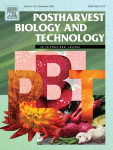Ver ítem
- xmlui.general.dspace_homeCentros Regionales y EEAsCentro Regional Buenos Aires SurEEA BalcarceArtículos científicosxmlui.ArtifactBrowser.ItemViewer.trail
- Inicio
- Centros Regionales y EEAs
- Centro Regional Buenos Aires Sur
- EEA Balcarce
- Artículos científicos
- Ver ítem
Revaluation of waste from fishing industry through generation of chitosan coatings to improve quality and extend shelf-life of minimally processed lettuce
Resumen
Chitosan is obtained at industrial scale through a process of alkaline deacetylation of chitin the major waste of shrimp industry. Its utilization could both diminish industrial environmental impact and add value to foods and other industrial products. In this study, an industrial chitosan obtained in Argentina and a commercial chitosan were physicochemically characterized and evaluated as edible coating for biopreservation of minimally processed lettuce.
[ver mas...]
Chitosan is obtained at industrial scale through a process of alkaline deacetylation of chitin the major waste of shrimp industry. Its utilization could both diminish industrial environmental impact and add value to foods and other industrial products. In this study, an industrial chitosan obtained in Argentina and a commercial chitosan were physicochemically characterized and evaluated as edible coating for biopreservation of minimally processed lettuce. Based on Nuclear Magnetic Resonance, X-ray diffraction and thermogravimetric and viscosimetric assays we conclude that both biopolymers have similar molecular weight and deacetylation degree. The chitosan coatings were applied by spraying to lettuce leaves that had been removed and cleaned after the harvest. Each sample composed by four whole leaves, packed into a low-density polyethylene bag, was stored at 4 °C for 15 d. Microbial quality, weight and color losses, antioxidant contents, stomatal closure and sensorial attributes were evaluated during storage. An initial reduction of 2 log in molds and yeast counts were obtained for both types of chitosan coatings. As a result, the counts remained below the limit value of 6 log for 12 d in the chitosan coatings, while in the control samples this limit was reached 6 d after storage. Total mesophilic bacteria counts were also reduced by both types of chitosan coatings, keeping counts under the threshold value of 7 log for 12 d while in control samples this value was exceeded at 9 d. Both chitosans increased chlorophyll content, total phenolic compounds and antioxidant activity in lettuce leaves during the storage. Besides, the leaf weight loss was minimized by both chitosan coatings, in accordance to a higher proportion of stomatal partial closure as seen by SEM. The overall visual quality was not affected by chitosan coatings. In conclusion, the industrial chitosan showed similar effects on stored minimally processed lettuce than the commercial chitosan adding value to a material that is currently considered a waste.
[Cerrar]

Autor
Fasciglione, Gabriela;
Goñi, Maria Gabriela;
Yommi, Alejandra Karina;
Perez Bravo, Jonas;
Ortueta, R.;
Scampini, A.;
Buffa, L.;
Andreu, Adriana;
Creus, Cecilia;
Fuente
Postharvest Biology and Technology 170 : 111310 (2020)
Fecha
2020-07-24
Editorial
Elsevier
ISSN
0925-5214
Documentos Relacionados
Formato
pdf
Tipo de documento
artículo
Proyectos
(ver más)
INTA/PNAIyAV-1130033/AR./Tecnologías de preservación de alimentos y de aprovechamiento de subproductos.
Palabras Claves
Derechos de acceso
Restringido
 Excepto donde se diga explicitamente, este item se publica bajo la siguiente descripción: Creative Commons Attribution-NonCommercial-ShareAlike 2.5 Unported (CC BY-NC-SA 2.5)
Excepto donde se diga explicitamente, este item se publica bajo la siguiente descripción: Creative Commons Attribution-NonCommercial-ShareAlike 2.5 Unported (CC BY-NC-SA 2.5)

